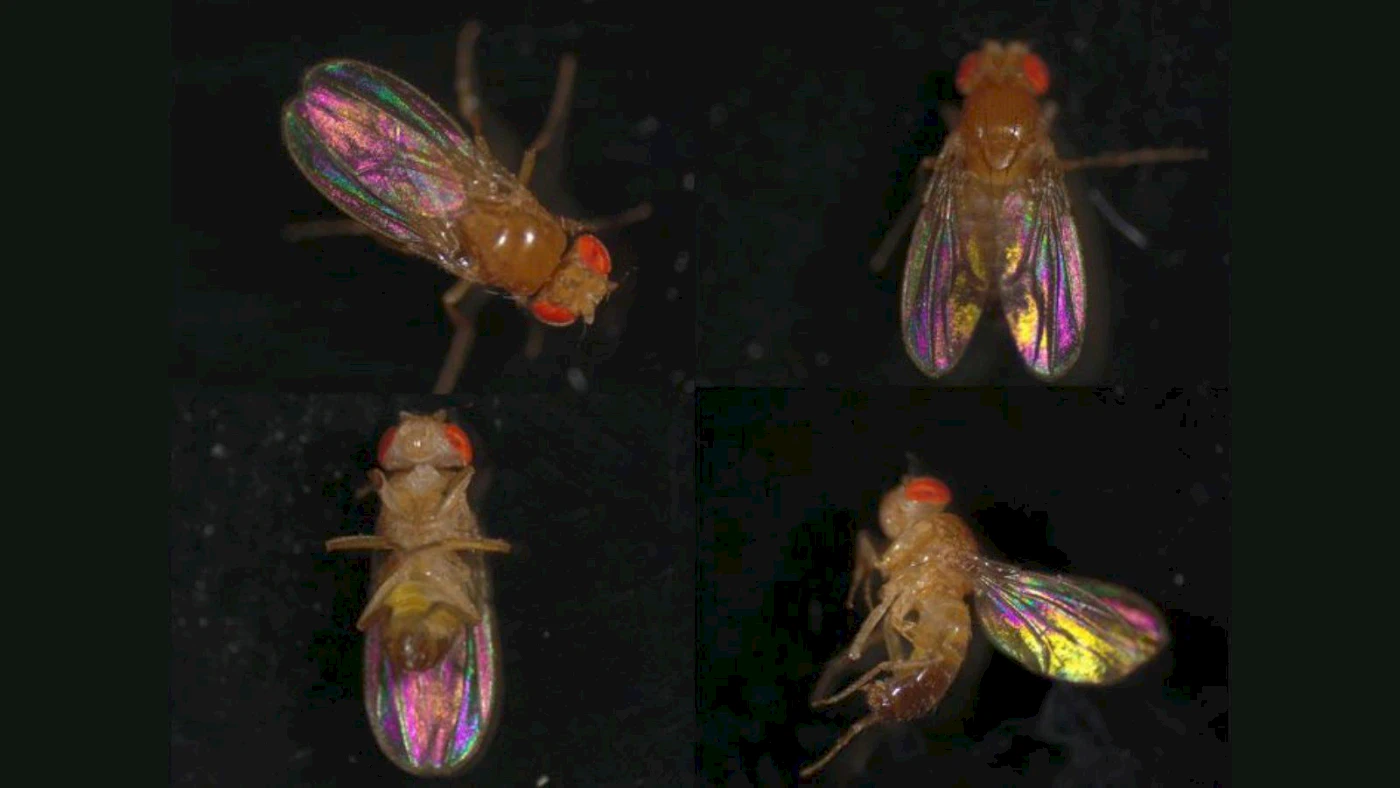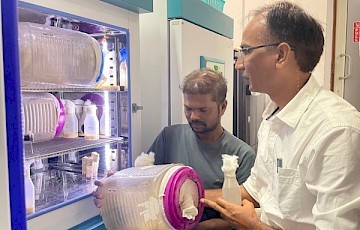17 February 2025
Study Shows Temperature Driven Changes in Structural Colouration in Insect Wings

Wing interference patterns (WIPs), the colour patterns visible when transparent insect wings are viewed against a black background, can change in response to environmental conditions like temperature. Note, these are not actual colours. This shows that the structural colour variation (i.e. WIPs) in insect wings aligns with the local temperatures where the flies originated and is crucial for studying climate change-driven choices, as colour impacts decisions. These findings emerged from an interdisciplinary study conducted by Subhash Rajpurohit, Associate Professor, School of Arts and Sciences, Ahmedabad University.
Professor Rajpurohit, along with a team of researchers from Ahmedabad University, including Professor Raghwinder Singh Grewal, and students Divita Garg, Kanak Dhotre, and Harshad Vijay Mayekar, examined WIPs in Drosophila melanogaster populations from three different altitudes and its sibling species D. simulans, reared at three different temperatures.
The study shows that higher-altitude populations exhibit different WIPs than lower-altitude populations. This is evidenced in D. melanogaster from the Western Himalayas, which exhibits a decrease in relative redness, greenness, and blueness (RGB values) as altitude increases. Additionally, D. melanogaster and D. simulans, reared in the lab, showed that higher temperatures resulted in more green and yellow tones, while lower temperatures displayed more blue (cyan and magenta) tones. These results align with the natural temperature conditions of their geographic origins.
The study also mapped wing thickness based on WIP data. Flies raised at lower temperatures had thicker wings and exhibited more blue colouration. Flies at higher temperatures had thinner wings and more green/yellow hues. This trend was also observed in wild populations across different altitudes.
The study results were obtained from a sample collection of male D. melanogaster flies from three different altitudes and the rearing of male D. melanogaster and its sibling species D. simulans at three different temperatures in the Species, Temperature, Evolution, and Mechanisms LAB (STEM LAB). Furthermore, wing images were captured and analysed for RGB variations. This analysis integrated a computer-generated Newton’s colour series.
This research is particularly important because, while previous research suggests WIPs play a crucial role in mate attraction, geographic and environmental influences on WIPs remain largely understudied. This study unravels two things: 1) rising temperatures could impact mate choice decision making 2) origin of such traits (i.e. WIP variations) could be even more complex than we realized. In all this study provides new insights into the environmental influences on WIPs, paving the way to study WIPs' adaptive significance and how variations matter in nature.
The study, “Structural colouration in Drosophila wings is thermally plastic and exhibits ecological variation,” was published in the journal Frontiers in Ecology and Evolution.



